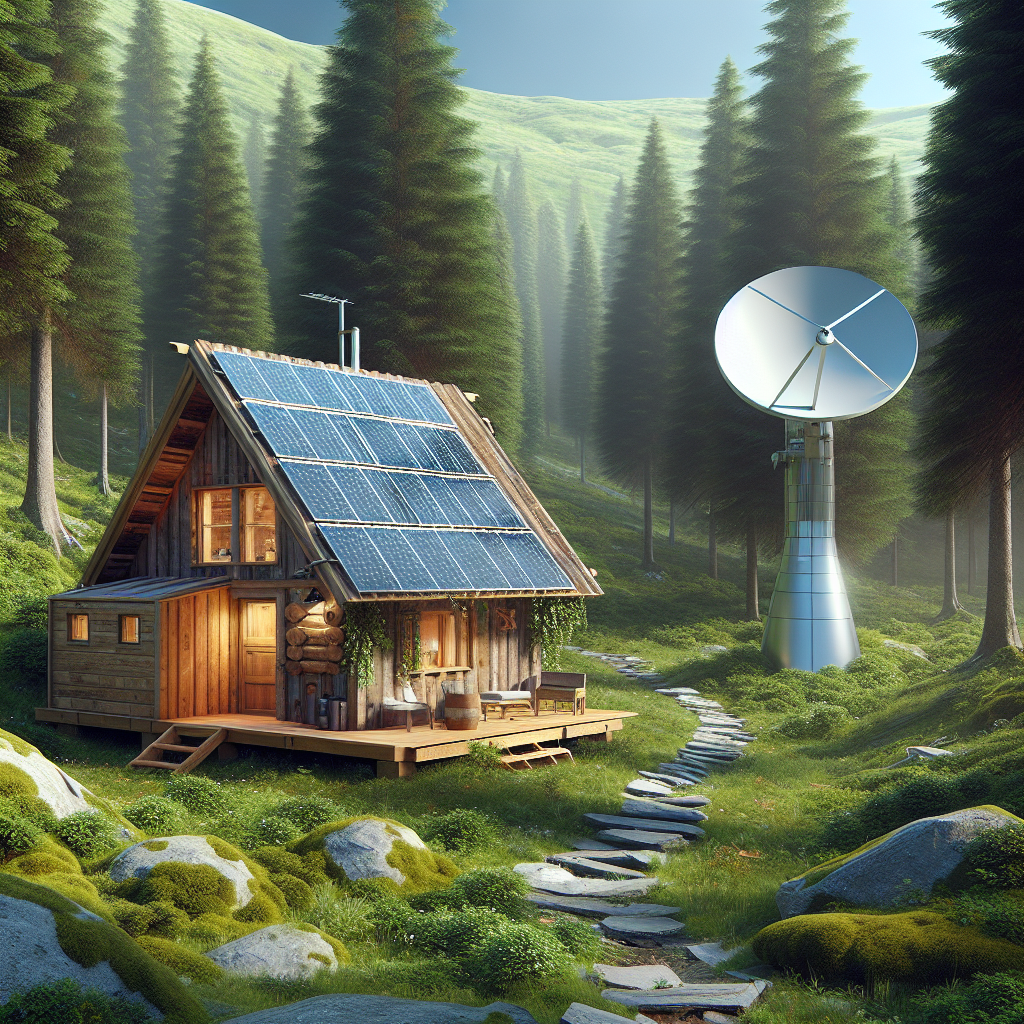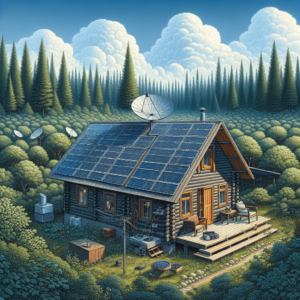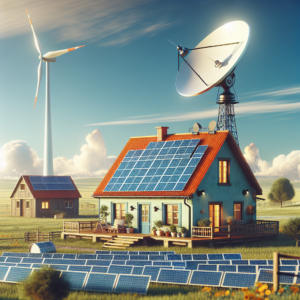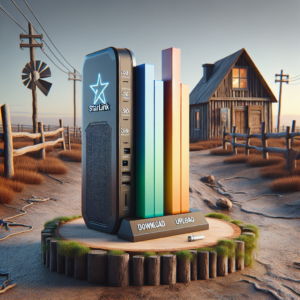
Harvesting the Sun: Optimal Angles for Peak Solar Performance
When it comes to off-grid living, every drop of sunshine counts. That’s why positioning your SunPower solar panels at the perfect angle isn’t just a good idea—it’s essential. The right tilt means more power, longer days, and a step closer to energy independence. Let’s get your panels soaking up the sun at their most efficient.
Article-at-a-Glance: Quick Facts and Must-Knows
-
Optimal solar panel angle varies by location and season.
-
Properly angled panels can significantly increase energy production.
-
Adjustable mounts offer flexibility for changing seasons.
-
Understanding the sun’s path is key to optimal panel positioning.
-
Maintenance and cleanliness also affect solar efficiency.
Why Angles Matter: The Physics of Solar Efficiency
Think of your solar panel as a sponge for sunlight. The angle at which it’s installed can either soak up the sun’s rays efficiently or let them slip away. It’s all about hitting that sweet spot where the sun’s rays can be absorbed directly. This direct hit means more energy and less waste, which is exactly what we want.
-
Direct sunlight exposure leads to higher energy production.
-
An incorrect angle can reduce the efficiency of your solar panels.
-
Optimal angles depend on your specific geographic location.
-
Even a small adjustment can make a big difference in power output.
Understanding SunPath
The sun’s journey across the sky isn’t random—it’s a path that changes with the seasons. By understanding this path, known as the SunPath, you can position your panels to catch the most rays all year round. It’s about knowing when the sun rises, where it peaks, and when it sets, and then aligning your panels to greet it every step of the way.
Angle Impact on Energy Absorption
It’s not just about the quantity of light; it’s the quality of the hit. When sunlight strikes your panels at the optimal angle, they absorb more energy. It’s like the difference between a glancing blow and a direct punch—the straighter the hit, the more powerful the impact. That’s the kind of punch we want our panels to pack.
-
Optimal angles lead to more effective energy absorption.
-
Energy absorption is highest when the sun’s rays hit the panels perpendicularly.
-
Adjusting the angle of your panels can compensate for the sun’s lower position in winter.

Solar Positioning: How to Set the Stage for SunPower Panels
Setting up your SunPower panels starts with understanding the local dance of light and shadow. The aim is to catch as many sunbeams as possible from dawn till dusk. It’s like arranging the seats for a theater show—you want every panel to have a front-row experience. Here’s how you can ensure your solar panels are always in the spotlight.
Geographic Considerations for Custom Angle Solutions
Your corner of the world is unique, and so is the path the sun takes over it. Whether you’re nestled in the northern latitudes or basking near the equator, your solar panels need a custom angle. It’s a bit like tailoring a suit—it needs to fit just right. By considering factors like latitude and the local landscape, you can tailor the tilt of your panels for maximum efficiency.
-
Latitude is the starting point for determining the best panel angle.
-
Local landscape features can affect sun exposure—avoid shading from trees and buildings.
-
Remember to account for the azimuth, the compass direction that your solar panels face.
Seasonal Adjustments: A Year-Round Approach
The sun plays a seasonal game of hide-and-seek, changing its height and course throughout the year. To keep up, you might need to tweak your panel angles as the seasons shift. It’s like adjusting your sails to catch the changing winds. A little move can keep your solar harvest strong, even when winter tries to throw shade your way.
-
Winter sun sits lower in the sky—tilt your panels more steeply to face it.
-
In summer, the sun is higher, so a flatter angle can catch more rays.
-
Spring and fall are transitional periods—adjust angles gradually between the winter and summer extremes.
Installation Set-Up Strategies for Maximum Sun Exposure
Now that you know where and when the sun hits, it’s time to talk about how to set up your panels. A good installation takes advantage of every hour of sunlight, turning your solar system into a well-oiled machine. It’s not just about facing the sun—it’s about making the most of your space and resources.
Mounting Systems: Fixed vs. Adjustable
Mounting systems are the unsung heroes of solar efficiency. Fixed mounts are sturdy and low-maintenance, but they’re set in one position. They’re like a trusty old tree that always stands tall. Adjustable mounts, on the other hand, are like nimble acrobats, able to move with the sun’s motion. They require a bit more work, but the payoff is a year-round performance boost.
-
Fixed mounts are great for areas with consistent sun exposure year-round.
-
Adjustable mounts can be shifted manually or automatically to follow the sun’s seasonal arc.
-
Consider the extra cost and effort of adjustable mounts against the potential gains in energy production.
Calculating the Ideal Tilt for Your Location
Getting the tilt right on your solar panels is like finding the perfect angle to throw a ball – it needs precision. Your location on the globe dictates this sweet spot. A simple rule is to set the tilt angle equal to your latitude during the equinoxes, then adjust from there. But don’t worry, you don’t need to be a math whiz. There are tools and calculators online that can help you nail down the perfect angle for your specific spot on the map.
-
Use online solar angle calculators for precise measurements.
-
Adjust the tilt angle based on seasonal changes – higher in winter, lower in summer.
-
Keep an eye on the solar elevation angle to ensure maximum exposure.
Advanced Techniques to Boost Your Systems’ Output
Once you’ve got the basics down, it’s time to level up. There are a handful of advanced techniques that can squeeze even more power out of your solar setup. It’s like tuning a car for a race – every little adjustment can lead to better performance. Let’s explore how to turbocharge your solar panels for maximum output.
Integrating Solar Trackers with SunPower Panels
Solar trackers are like GPS for your panels—they follow the sun’s path across the sky. This constant alignment means your panels get direct sunlight all day long. It’s a game-changer that can significantly boost your system’s energy production. Imagine your panels are sunflowers, turning their faces to follow the light—that’s what a solar tracker does, and it can make a world of difference.
-
Solar trackers can increase energy production by up to 25% compared to fixed panels.
-
There are single-axis and dual-axis trackers, each suited to different conditions and locations.
-
While trackers are an investment, the boost in efficiency can make them worth the cost.
Cleaning and Maintenance for Optimal Performance
Keeping your solar panels clean is like keeping your windows spotless for a clear view. Dust, leaves, and bird droppings can block sunlight and reduce your system’s efficiency. A regular cleaning schedule ensures that your panels are always ready to perform at their best. And don’t forget about the wiring and batteries—routine check-ups will keep your system running smoothly for years to come.
-
Wash your panels a few times a year, more if you live in a dusty area.
-
Inspect your system regularly for any signs of wear and tear.
-
Ensure trees and shrubs are trimmed to prevent shading on your panels.

Living Off-Grid with SunPower: Realizing Your Energy Independence Dream
Imagine a life where you’re the master of your own energy, where power cuts and grid failures are things of the past. That’s what living off-grid with SunPower can offer. It’s not just about saving money—it’s about freedom and self-reliance. With a well-designed solar system, you can power your home, your tools, and even stay connected with the world through satellite internet. It’s a sustainable lifestyle that’s within your reach.
-
Assess your energy needs to determine the size and number of panels required.
-
Combine solar power with energy storage systems to ensure round-the-clock electricity.
-
Consider adding a backup generator for those rare days when the sun doesn’t shine enough.
Matching Panel Performance with Consumption Needs
It’s like fitting pieces together in a puzzle—your solar panels need to match your energy consumption. You’ve got to know how much power you use to determine how many panels you’ll need and how to position them. Think about your daily activities: cooking, lighting, heating water. All these add up. By understanding your energy needs, you can design a solar system that’s just the right size, ensuring your panels are not just efficient, but effective for your lifestyle.
-
Calculate your daily power usage to estimate the size of the solar system required.
-
Factor in the efficiency of your appliances and any future consumption changes.
-
Design your solar system with a bit of extra capacity to cover unexpected energy needs.
-
Consider the sunlight hours in your region to ensure your panels can meet your energy demands.
-
Balance your energy production with storage solutions to have power even when the sun sets.
Combining Solar Panels with Satellite Internet for Remote Connectivity
Living off-grid doesn’t mean living off the map. By pairing your solar panels with satellite internet, you can enjoy the perks of remote living without sacrificing connectivity. It’s about having the best of both worlds—sustainable energy and the world at your fingertips. With a reliable internet connection powered by the sun, you can work, learn, and stay in touch, no matter how far you are from the nearest town.
-
Choose a satellite internet provider that offers services in your remote location.
-
Ensure your solar system has enough capacity to power your internet equipment.
-
Use energy-efficient routers and modems to minimize power consumption.
-
Consider a backup power source to keep your internet running during periods of low sunlight.
Frequently Asked Questions
What is the best angle for solar panels in my region?
The best angle for your solar panels really depends on where you live. If you’re near the equator, your panels will be nearly flat, while further north or south means steeper angles. A good rule of thumb is to start with an angle equal to your latitude, then adjust for seasonal changes. But don’t worry, you don’t have to guess—there are plenty of resources and experts who can help you find the perfect tilt for your panels. Online calculators and solar experts can provide guidance tailored to your specific location.
“For optimal year-round production, you might set the tilt angle at your latitude minus 15 degrees in summer and your latitude plus 15 degrees in winter.”
Can I adjust the angle of my solar panels once they’re installed?
Absolutely! If you’ve gone for adjustable mounts, changing the angle of your solar panels is a breeze. It’s like adjusting a recliner for comfort—except you’re optimizing for energy instead. You can manually tilt the panels or, if you’ve invested in a solar tracker, let the technology do the work for you. Adjusting your panels ensures they’re always catching the most sun, all year round.
“Regular adjustments can help your solar panels maintain up to a 40% increase in efficiency compared to fixed panels, depending on your location.”
Are solar trackers worth the investment?
Deciding on solar trackers is a bit like choosing between a standard car and one with all the bells and whistles. Solar trackers are the premium option, providing your panels with the ability to follow the sun’s movement, much like a sunflower does. This can lead to a significant boost in energy production—often up to a 25% increase or more. But, they come with a higher upfront cost and can require more maintenance. It’s a balance between immediate costs and long-term benefits. For many, the decision is clear: the extra energy yield and potential savings on your power bill can make solar trackers a smart investment in the long run.
-
Solar trackers can significantly increase your energy harvest.
-
The cost of trackers must be weighed against the potential energy gains.
-
Consider your budget, your energy needs, and how long you plan to live off-grid.
-
Trackers are most beneficial in regions with high solar irradiance.
How does panel angle affect the lifespan of a solar installation?
Just like any piece of outdoor equipment, solar panels are exposed to the elements. When angled correctly, they not only capture more energy but also shed rain, snow, and debris more effectively. This self-cleaning aspect can reduce wear and tear, meaning your panels could last longer. Think of it as positioning an umbrella in the rain; if it’s tilted just right, you stay dry and the umbrella suffers less damage. A well-angled solar panel installation can similarly avoid unnecessary stress, contributing to a longer lifespan and more reliable performance over the years.
-
Proper angling helps panels self-clean, reducing maintenance needs.
-
Decreased debris accumulation can prevent physical damage and shading.
-
Less wear and tear from the elements can extend the life of your solar installation.
How often should I maintain my SunPower panels for optimal performance?
Maintenance is to solar panels what check-ups are to your health—regular and necessary. To keep your SunPower panels at peak performance, a good rule of thumb is to inspect them at least twice a year. Look for any dust, debris, or snow that could be blocking the sunlight. Cleaning your panels is straightforward: a soft brush or cloth and some water will usually do the trick. If you live in an area with lots of pollen, dust, or bird activity, you may need to clean them more frequently. Remember, a clean panel is a happy panel, and happy panels mean more energy for you.
-
Inspect and clean your panels at least twice a year.
-
Use a soft brush or cloth and water for cleaning.
-
More frequent maintenance may be needed in dusty or high-pollen areas.
-
Monitor your system’s energy output to detect any potential issues early.
As we wrap up, let’s remember that solar power isn’t just about technology—it’s about a lifestyle of independence and sustainability. By understanding the best angles for your SunPower solar panels and considering the benefits of solar trackers, you’re well on your way to maximizing efficiency and living off-grid. Regular maintenance will ensure your system runs smoothly for years, helping you enjoy the freedom that comes with self-sufficiency.
Whether you’re a seasoned off-grid veteran or just starting your journey, remember that every step you take towards optimizing your solar setup brings you closer to energy independence. So, keep your panels clean, adjust their angles with the seasons, and you’ll harness the sun’s power to its fullest potential. Here’s to clear skies and full batteries!







